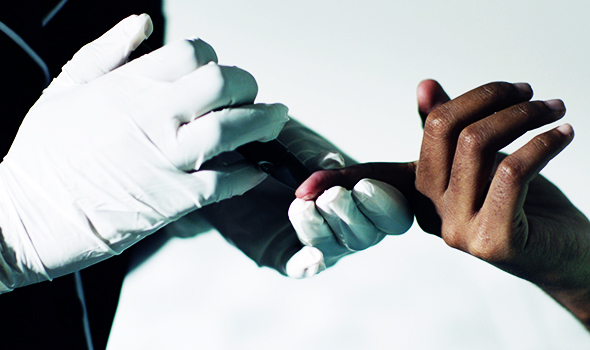16 Facts about HIV in Africa (In 2018)
News
16/08/2018

Adebola Aduwo takes a look at the facts behind the HIV epidemic and its impact on Africa.
When we think about HIV/AIDS in Africa, what comes to mind is its alarmingly high prevalence compared to the rest of the world. There are also a number of behavioural, cultural, socioeconomic & structural factors attached to this situation.
From my viewpoint, we as Africans have a renewed attitude towards tackling HIV. I am proud to see that as individuals, groups, organisations and governments, we are doing what we can to spread the word and raise awareness. Shows like MTV Shuga go a long way towards fighting the deadly (but treatable!) virus and we can’t wait for the day that we reach “0 new infections” in a year.
ICYMI: Do you want to learn more about the impact that MTV Shuga has on at-risk, adolescent girls? Read more about the findings from the World Bank’s study on #MTVShugaNaija!
"I had sex after watching the first Shuga Naija series. I first went for an HIV test and then went to buy a lot of condoms. It was all thanks to MTV Shuga. I wouldn't be living the safe sex lifestyle am living now if it weren't for you guyz"
Keep sharing your testimonies ?
— MTV Shuga (@MTVShuga) May 11, 2018
While the progress we are making is encouraging, the facts below emphasise how much we still need to accomplish if we want to #EndHIV. Here are 16 facts about HIV and AIDs — in an African context.
DID YOU KNOW?
-
Every day, about 170 people are infected with HIV in Central and West Africa. Unfortunately, many cannot afford treatment. (source)
-
Southern Africa remains the region most severely affected, with an estimated of 7.1 million people living with HIV in 2016. (source)
-
Nigeria has the second largest HIV epidemic in the world. (source)
-
91% of children who are HIV positive live in Africa.
-
Limited access to antiretroviral drugs remains an issue across the African continent. Therefore, there are still AIDS-related deaths in Africa.
-
69% of HIV+ people live in SSA. (source)
#Dyk: Girls and young women account for over 70% #HIV infections among adolescents in Sub- Sahara Africa…#EndHIVToday #WorldAIDSDay@UNAIDS @MinofHealthUG @UNFPAUganda @FCIatMSH pic.twitter.com/R1J2Fgv98G
— #Youth4FamilyPlanning (@UYAFPAH1) December 1, 2017
-
Countries in the northern part of Africa have the lowest prevalence of HIV in the world. (source)
-
South Africa has made huge improvements in getting its citizens to test for HIV. 86% of its people are now aware of their status. (source)
-
Gender inequality in relationships and marriages increases susceptibility to HIV infections. For instance, only 69% of men believe a woman has the right to refuse sexual intercourse even when she’s aware that he has sex with other women. (source)
-
More than half of all sex workers in Zimbabwe are living with HIV. The most recent data in 2016 recorded a prevalence of about 57.1%. (source)
-
In Malawi, roughly a third of all new HIV infections (12,500 out of 36,000) in 2016, occurred among young people (aged 15-24). Of these, 70% were among young women. (source)
-
Despite increasing sensitisation about HIV/AIDS, the use of condoms remains low among sexually active 15-to-19-year-olds, in Malawi, with only 25% of married females and 30% of sexually active unmarried females from this age group using any form of modern contraception. (source)
-
The average life expectancy in sub-Saharan Africa is 54.4 years of age, largely because of HIV/AIDs. In some African countries, it is below 49.
-
Homosexuality is illegal in most African countries and therefore carries a prison sentence. This, coupled with societal attitudes, leads to alarming levels of stigma and discrimination towards men who have sex with men as well as people who are lesbians, bisexual and transgender (LGBT), thereby discouraging many people from seeking the HIV treatment and counselling they require. (source)
-
HIV prevalence in Zambia has declined, falling by 19% between 2003 and 2015. (source)
-
HIV Testing and Counselling services have been expanded and the number of people testing for HIV is increasing as a result of this development. (source)
#MTVshugaDS | Femi doesn't “have” HIV. He says he's “living with it” ? That's a great outlook. pic.twitter.com/WuvXgxcmlu
— MTV Shuga (@MTVShuga) May 3, 2017
Do you know what I think is still the most unfortunate part of this epidemic ? The stigmatization channelled towards HIV-positive individuals. One thing that we don’t need research or studies to prove is that an HIV-Positive human deserves the exact same rights as an HIV-negative human. Let us collectively do better. Treat them with love and respect.
And if you ever test and find out that you are positive, please remember that HIV/AIDS is not a death sentence. Do you know your status? Go get tested today!
Here is some helpful material to assist you with your first time testing:
Are you scared to test for HIV? This guide will give you an idea of what to expect.
Tell us what you learnt in the comment section below.







comments
Log In or register to comment